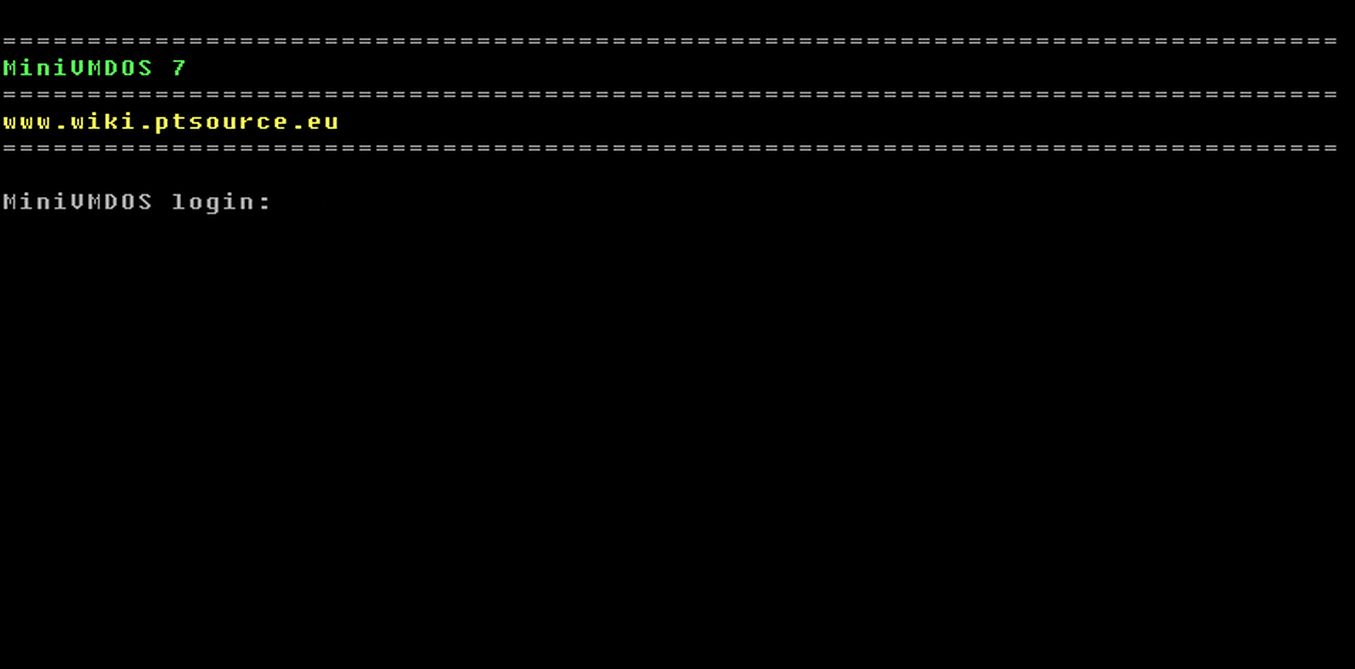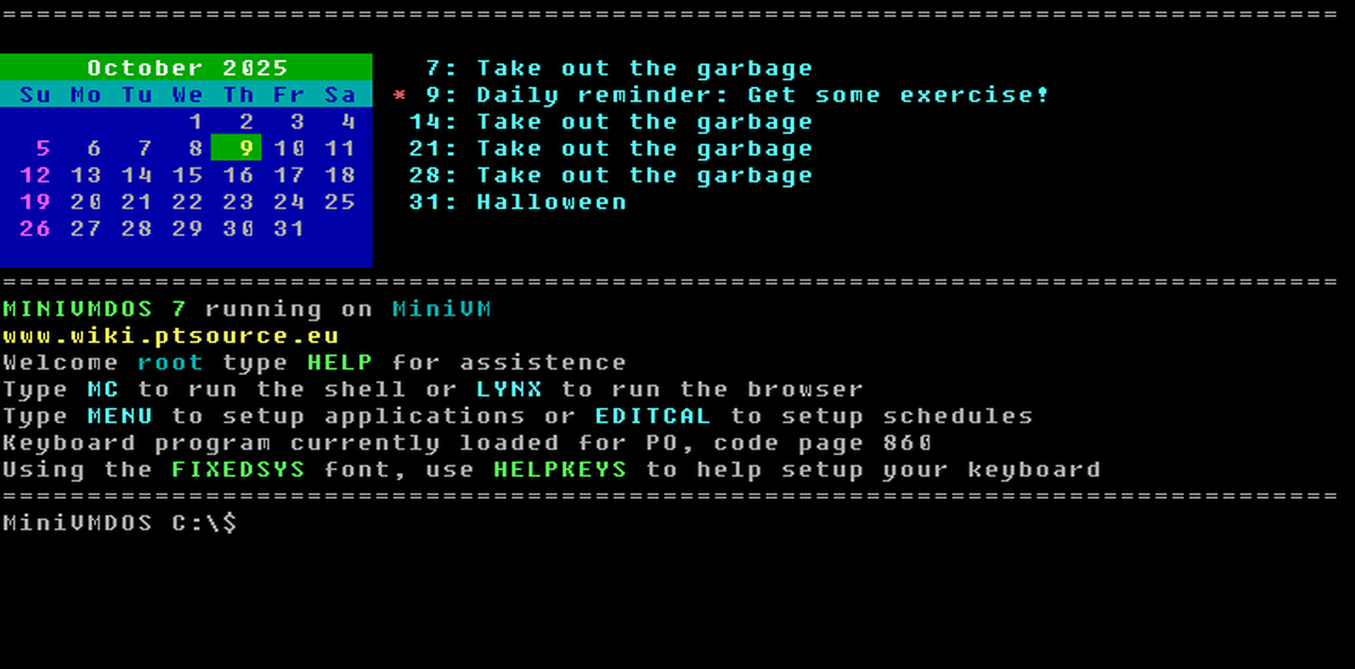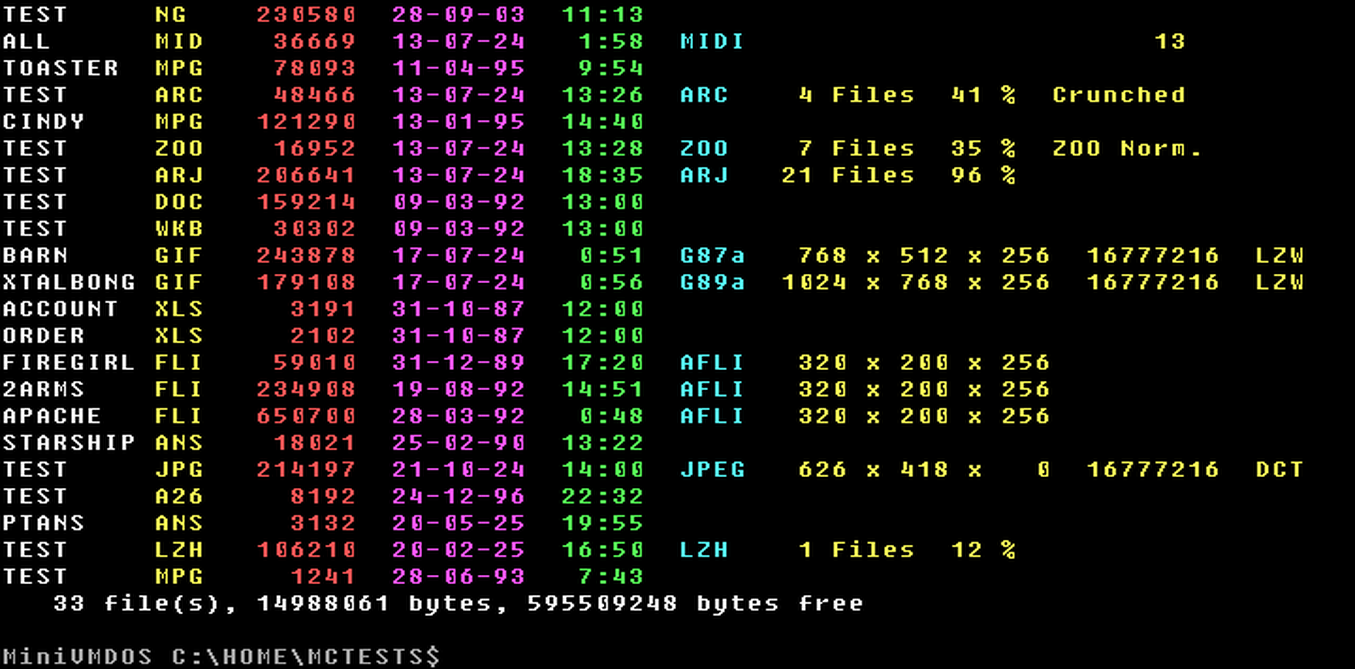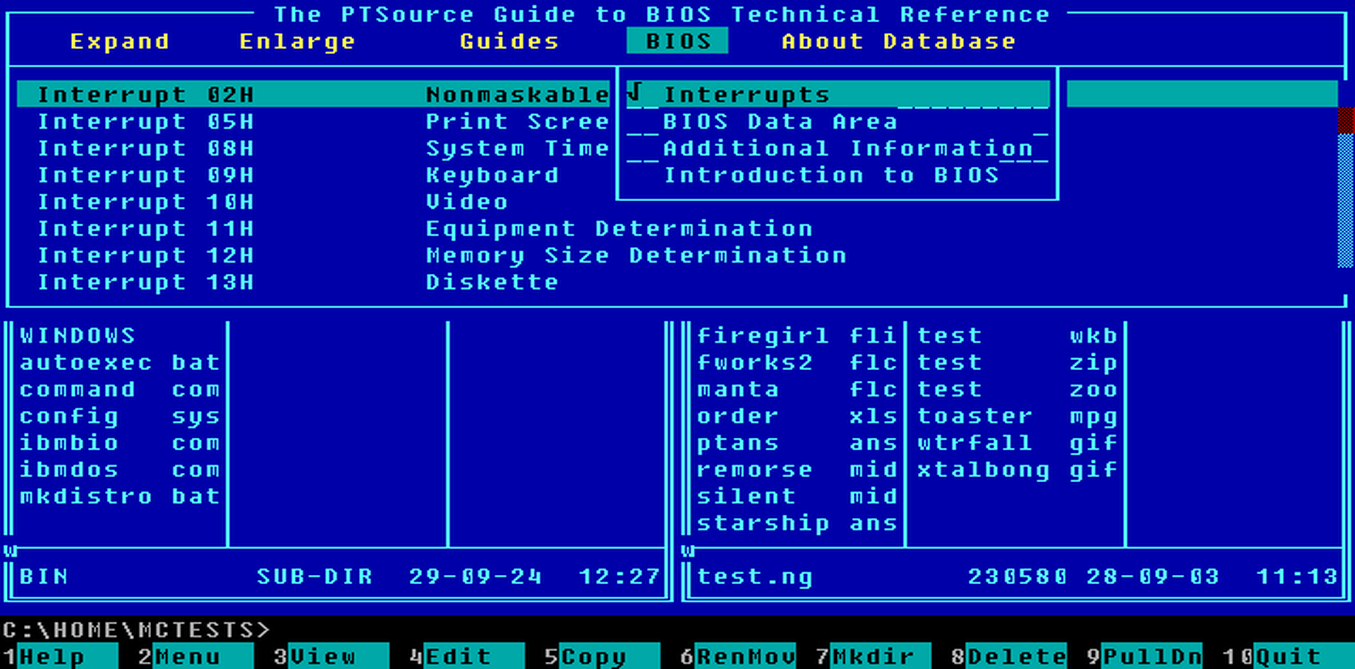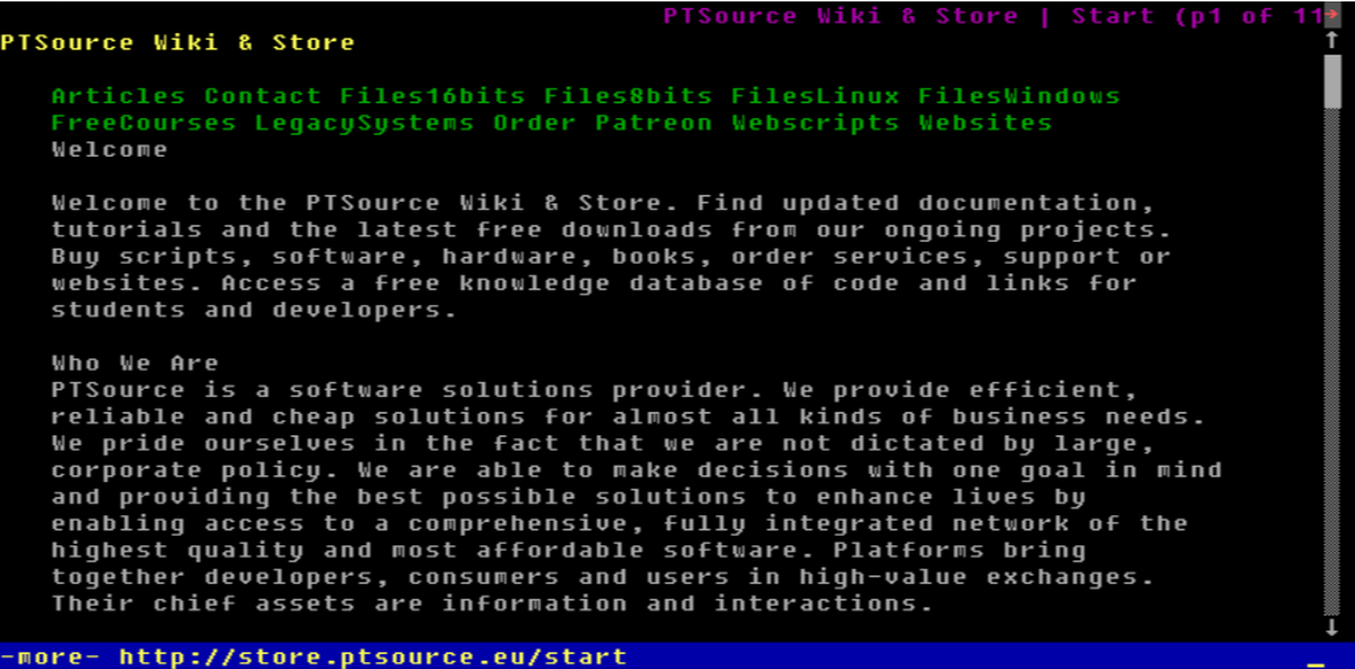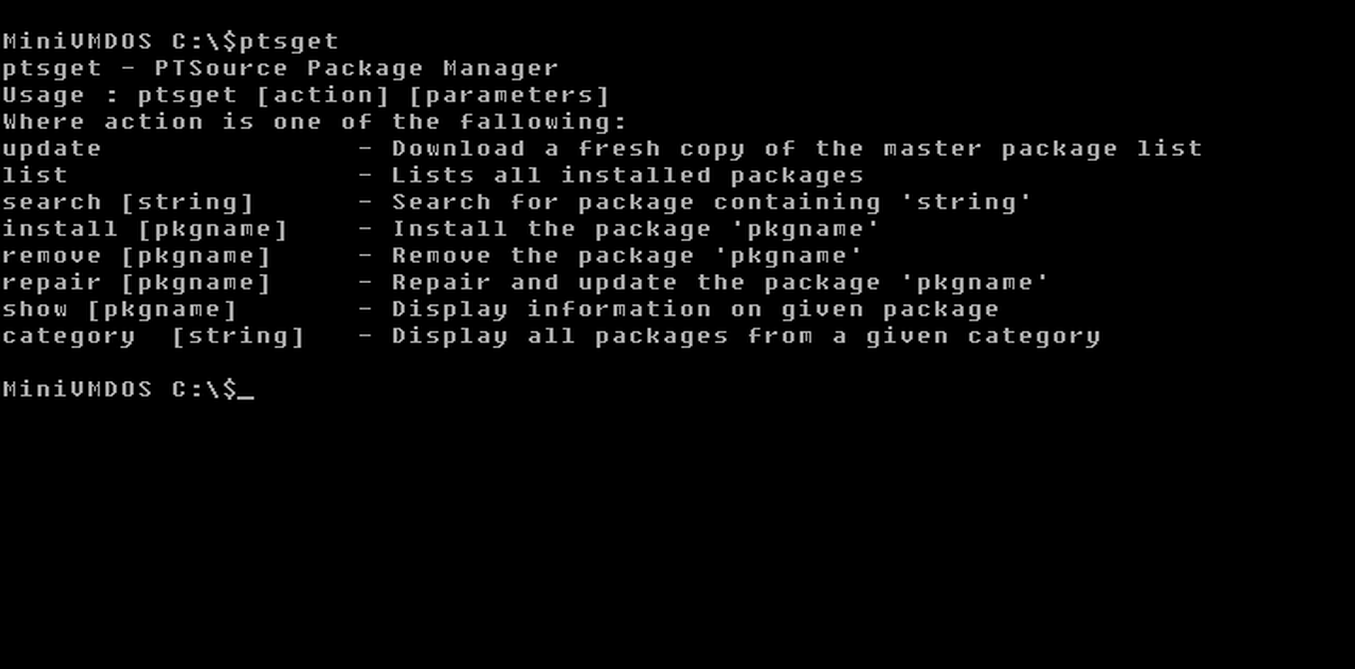DOS, or Disk Operating System, holds a significant place in computing history as one of the pioneering operating systems. Initially developed by Microsoft, it became ubiquitous in the 1980s and early 1990s, serving as the primary interface for personal computers. Characterized by its command-line interface, users interacted with DOS through typed commands, navigating file systems and executing programs. Despite its simplicity, DOS provided a robust platform for software development and application execution, laying the groundwork for the digital revolution. Its influence persists in modern computing, as DOS principles underpin many aspects of contemporary operating systems.
Current version 7 (LTSR) updated 03/08/2025 for Windows
PTSource MiniVMDOS is a professional operating system in the lineage of DOS operating systems intended to run legacy software inside PTSource MiniVM for Windows x86 and x64. Although PTSource MiniVMDOS is a real DOS system and can be installed on real hardware or other virtual machines with the provided tools, it comes preconfigured and optimized for PTSource MiniVM wich permits transparent web and network access seamlessly into its familiar command-line interface and moreover, it introduces native support for printing text to Windows printers, streamlining document management across platforms. With network support, users can effortlessly collaborate and share resources in real-time, enhancing productivity and efficiency.
| System requirements |
|---|
| Windows 8.1, 10 or 11 platforms arch x86 or x64. |
- Runs contained inside PTSource MiniVM
- PTSource PTSGET package manager included
- PTSource MiniVMDOS SDK available for developers
- Network support and multiuser environment
- PTSource Tools Disk hard drive tools included
- PTSource Guides reader and compiler included
- PTSource Basic interpreter and compiler included
- PTSource Calc included
- PTSource X System included
- DPMI support and VDM based multitasking
- Multiuser session manager
- VESA Graphics
- 300 DOS Commands and Utilities
- MiniVMDOS Commander
- Image Viewer Included (gif|jpg|jpe|jfi|bmp|pcx)
- Media Viewer Included (mpeg|fli|flc)
- Docs Viewer Included (doc|wkb)
- Spreadsheets Viewer Included (dbf|xls|wrk|wr1|wkt|wks|wkq|wk1)
- Archives Extractor Included (zoo|zip|rar|pak|lzh|lim|lha|ice|hyp|arj|arc)
- MiniVMDOS User Manager
- MiniVMDOS Enhanced Disk Performance Driver
- MiniVMDOS Clipboard Driver
- Online Help System
- UNIX and CMD style commands
- ZIP & UNZIP
- ARJ & UNARJ
- ZOO & UNZOO
- TAR & GZIP
- LHA
- NASM
- Python
- Perl
- TclSH
- Bash, CSH and CMD interpreters
- PGPShell with PGP encryption
- Dialog, BBOX
- Samba Client
- TCP/IP Netserver Client and Driver
- Lynx, Gopher, WGET, FTP, IRC, RSYNC, VNC, SSH and more...
- 100% Compatible with MS-DOS, PC-DOS, DR-DOS
- Windows 3.11 Enhanced Mode Support
Info : Use login root and and password root in first login.
PTSource MiniVMDOS uses PTSource PTSGet to maintain extra packages. PTSource PTSGet is a command-line package management tool used in PTSource distributions. It simplifies the process of installing, updating, and removing software packages. With a vast repository of precompiled packages provides access to a wide range of applications for users and administrators alike. See here all avaliable extra packages.
MiniVMDOS pays tribute to Gary Kildall, the visionary pioneer behind CP/M and a key influence on modern operating systems, including DOS. Kildall's groundbreaking work laid the foundation for personal computing, enabling millions to harness the power of microcomputers. His innovation not only shaped the software industry but also inspired generations of developers. MiniVMDOS honors his legacy by keeping the spirit of simplicity, efficiency, and accessibility alive.
- Legacy Hardware and Software Support. Industrial and embedded systems (e.g., CNC equipment, medical devices, or lab systems) still rely on DOS-based software for control. Specialized software: Some critical business or scientific applications were written for DOS and haven't been updated.
- Retro Gaming. Classic DOS games (like Doom, Commander Keen, or Prince of Persia) require a DOS environment. Enthusiasts use real hardware or emulators for an authentic experience.
- Education and Learning. DOS is a great platform for teaching low-level computing concepts, like file systems, memory management, and command-line interfaces. Its ideal for understanding early PC architecture and OS design.
- Lightweight Computing. Runs well on very old or limited hardware where modern OSes are too heavy. DOS boot disks are useful for BIOS updates, partitioning, or data recovery.
- Hobby and Preservation. Retrocomputing communities work to preserve and maintain vintage systems. While its obsolete for general-purpose use, DOS still has a niche but meaningful role in legacy support, education, hobbyist computing, and industrial systems. In the right hands, its still a useful and fascinating platform.





